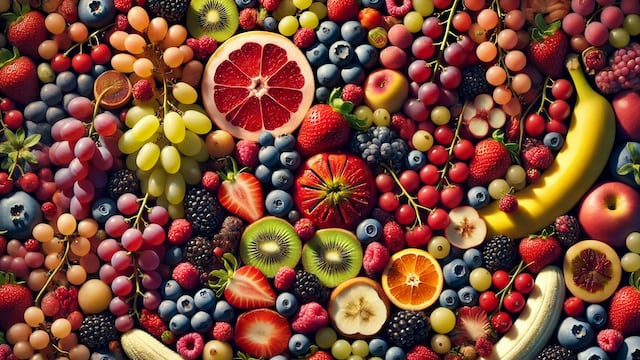When it comes to fruits, their names should generally give us a clear idea of what we’re eating — but there are a few notable exceptions that might surprise you.

This fruit myth has fooled millions, and you’re likely one of them

When is a berry not a berry? What a strange question to ask, right? A berry is surely any fruit that we’ve helpfully named [something]berry. Well, sorry to be the bearer of confusing news, but this is rather far from the truth. Let’s squash the general misunderstanding...
What fruits are real “berries”?
In the world of fruits, the term “berry” often conjures up images of small, juicy, and wholesome treats bursting with flavour. The ones that immediately spring to mind: strawberry, blueberry, raspberry. Mmmmm.
But, to understand what truly qualifies as a “berry”, we must first grasp the botanical definition. According to botanists, yes, blame them not me, a berry is a fleshy fruit produced from a single ovary that contains seeds embedded in the pulp. This succinct criterion immediately disqualifies several popular fruits from the “berry” club.
How to grow strawberries 🍓
— Science girl (@gunsnrosesgirl3) July 9, 2024
pic.twitter.com/I8XA6leNrc
The strawberry con
Let’s begin with strawberries — arguably the most iconic “berry” that technically isn’t one. These bright red treats, famously tied to Wimbledon, may be delicious and widely known as berries, but botanically speaking, they’re actually aggregate fruits. What look like seeds on the outside are each an individual ovary, each holding its own tiny seed.
In contrast, true berries — like blueberries and grapes — come from a single flower’s ovary and have their seeds tucked inside the fruit’s flesh.
Sound a bit too scientific? There’s more to uncover...
Blackberries and raspberries, often enjoyed fresh or in jams, fall into the aggregate fruit category as well. Their structure comprises multiple small drupelets, each containing its seed. These drupelets collectively form what we perceive as a single fruit. Similarly, the less common mulberries and loganberries also fail the berry test due to their multiple-seeded aggregate composition.
Tomato-berry and banana-berry
So what about those fruits that rightfully claim the title of “berry.” Let’s start with the tomato, yes, the tomato. No matter how you pronounce it, and despite its culinary classification as a vegetable, a tomato is botanically a berry. Their seeds and gelatinous pulp meet all the criteria for this classification.
Bananas, with their familiar curved shape and creamy flesh, are also berries, as they develop from a single ovary. Sorry about all this.
True berries vs non-true berries
Below is a summary of the fruits that fall into the two categories so that you can pass on your newfound knowledge to the next generation. We were today years old when we found this out.
| True Berries (Botanical Definition) | Not True Berries (Commonly Called Berries) | Other Fruits Often Confused as Berries |
|---|---|---|
| Tomato | Strawberry | Cherry |
| Grape | Raspberry | Olive |
| Banana | Blackberry | Pomegranate |
| Kiwi | Mulberry | |
| Blueberry | Boysenberry | |
| Currant (e.g., blackcurrants, redcurrants) | Loganberry | |
| Gooseberry | Cloudberry | |
| Elderberry | Salmonberry | |
| Cranberry | Huckleberry | |
| Pepper (Bell pepper) | Chokeberry | |
| Serviceberry |
Remember the most important thing about these revelations: just because the pesky botanist have classified some of our believed-to-be berries into a different classification, that doesn’t change a thing when it comes to our enjoyment as we much them down by the handful. And now we can do so while smugly advising those around us of the true meaning of the word.
Related stories
Get your game on! Whether you’re into NFL touchdowns, NBA buzzer-beaters, world-class soccer goals, or MLB home runs, our app has it all.
Dive into live coverage, expert insights, breaking news, exclusive videos, and more – plus, stay updated on the latest in current affairs and entertainment. Download now for all-access coverage, right at your fingertips – anytime, anywhere.


Complete your personal details to comment